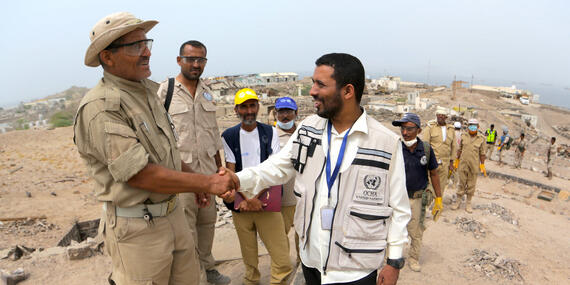Civil-military coordination

Humanitarian organizations, State security forces and non-State armed groups increasingly operate in the same space in emergencies, whether they are caused by conflict, extreme weather events or other human-made disasters.
Effective dialogue between these entities is critical to obtain and maintain humanitarian access to people in need and ensure their protection.
UN Civil-Military Coordination (UN-CMCoord) formalizes this essential dialogue and interaction to protect and promote humanitarian principles, avoid competition, minimize inconsistency and, when appropriate, pursue common goals.
This interaction ranges from coexistence to cooperation. Good coordination between the humanitarian community and the military requires information sharing and a clear sense of the division of tasks.
UN-CMCoord can also help to reduce the risk of misunderstandings or conflicts between military and civilian personnel, and ensure that humanitarian assistance is provided in a way that is coordinated and consistent with international humanitarian law.
- Visit the Humanitarian/Military Dialogue website.
- Read the Recommended Practices for Effective Humanitarian Civil-Military Coordination of Foreign Military Assets (FMA) in Natural and Man-Made Disasters.
- Read the UN-CMCoord Guide for the Military 2.0.
- Read the IASC Non-Binding Guidelines on the "Use of Military or Armed Escorts for Humanitarian Convoys.”
- Read the Guidelines On the Use of Military and Civil Defence Assets To Support United Nations Humanitarian Activities in Complex Emergencies.
- Read the Oslo Guidelines on The Use of Foreign Military and Civil Defence Assets In Disaster Relief.
- Read the OCHA on Message: Civil-Military Coordination.
- Take the United Nations Humanitarian Civil-Military Coordination (UN-CMCoord) eCourse.
